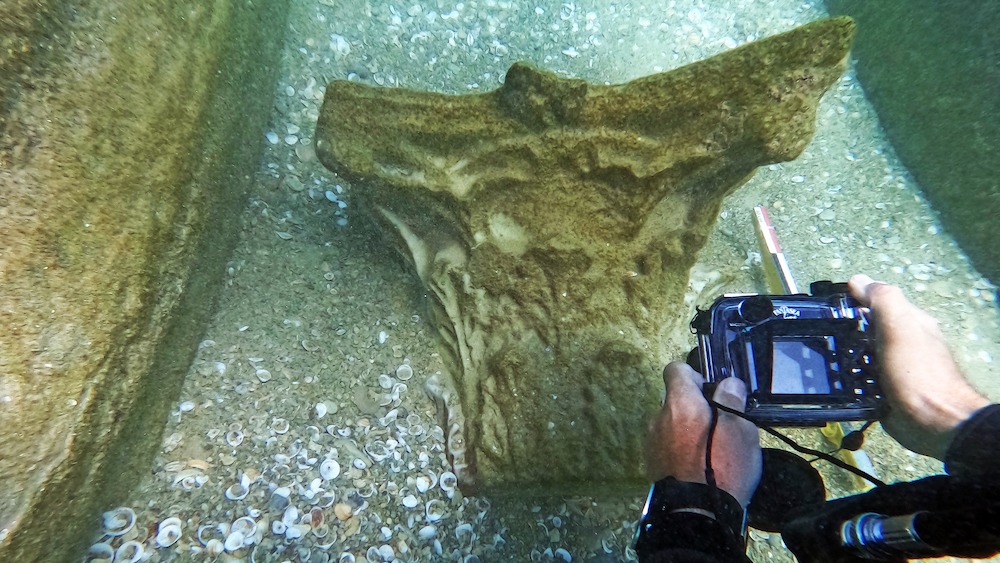Diver unexpectedly discovers Roman-era shipwreck carrying beautiful marble columns off Israel's coast
A diver off the coast of Israel discovered an 1,800-year-old Roman shipwreck containing 44 tons of artifacts.

A diver swimming in the Mediterranean Sea recently happened upon an 1,800-year-old shipwreck off the northwestern coast of Israel.
Although archaeologists knew about the wreck, they didn't know its "exact whereabouts as it was covered by sand," Koby Sharvit, director of the underwater archaeology unit at the Israel Antiquities Authority (IAA), said in a statement released Monday (May 15). It's likely that recent storms helped expose the cargo, he added.
The ancient Roman-era ship was carrying 44 tons (40 metric tons) of marble, including Corinthian columns adorned with ornate vegetal patterns, capitals (the uppermost part of the columns) and marble columns measuring approximately 20 feet (6 meters) long; this is the oldest known sea cargo wreck in the Eastern Mediterranean, according to a statement.
After discovering the wreck several weeks ago, diver Gideon Harris reported it to the IAA.
Related: Ancient Roman camps from secret military mission spotted using Google Earth
Based on the size of the architectural elements, archaeologists calculated the size of the merchant ship, determining that "it could bear a cargo of at least 200 tons [181 metric tons]," Sharvit said; that's equivalent to nearly 30 adult male African elephants.
By examining the position and angle of the ship's remains, the archaeologists think it "encountered a storm in the shallow waters and dropped anchor in a desperate effort to prevent the ship from grounding," according to the statement.
Get the world’s most fascinating discoveries delivered straight to your inbox.
"Such storms often blow up suddenly along the country's coast," Sharvit said, "and due to the ships' limited maneuvering potential, they are often dragged into the shallow waters and shipwrecked."
He added that the marble cargo may have come from Turkey or Greece and was traveling south "possibly [to] Alexandria in Egypt."
For years, archaeologists have debated whether or not ancient Romans imported fully-crafted architectural elements or only shipped partially finished pieces. This finding puts the debate to rest showing that the pieces "left the quarry site as basic raw material or partially worked artifacts and that they were fashioned and finished on the construction site, either by local artists and artisans or by artists who were brought to the site from other countries, similarly to specialist mosaic artists who traveled from site to site following commissioned projects," according to the statement.
It's unclear where the marble columns were meant to be placed, but it's possible they would have decorated a "magnificent public building" such as a temple or theater, according to the statement.
Jennifer Nalewicki is former Live Science staff writer and Salt Lake City-based journalist whose work has been featured in The New York Times, Smithsonian Magazine, Scientific American, Popular Mechanics and more. She covers several science topics from planet Earth to paleontology and archaeology to health and culture. Prior to freelancing, Jennifer held an Editor role at Time Inc. Jennifer has a bachelor's degree in Journalism from The University of Texas at Austin.
 Live Science Plus
Live Science Plus





